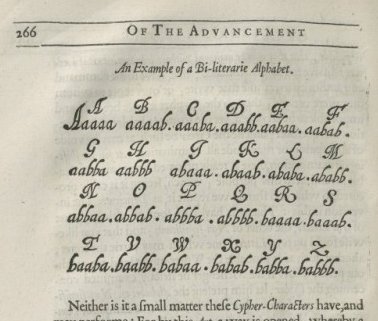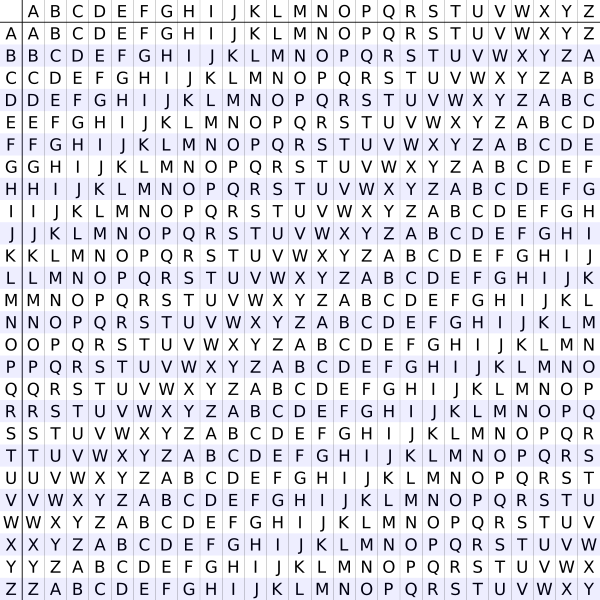Summary by @tldr:
 All this methods are easy to crack by modern means, a simple character count (if the message is long enough) would return the most "possible" letters.
All this methods are easy to crack by modern means, a simple character count (if the message is long enough) would return the most "possible" letters.
First, you need a table like this:  To encrypt a message you need a keyword that will determinate the cipher result, the transposition for each character.
To encrypt a message you need a keyword that will determinate the cipher result, the transposition for each character.
Then Germany introduced the ADFGVX cipher (ADFGX before that), believing that they had an uncrackable method, that would give them an edge during the war, since the surprise factor is of utmost importance.
This is a 2 step cipher, a substitution (similar to Polybius') and a transposition method, used by Germany in 1918, before striking Paris.
Just applying the Polybius' method:So, "Tim uses steem" would become:GVVFXGXDAFAGAFAFGVAGAGXG Now, lets add the keyword to the mix: "datkey" D A T K E Y G V V F X G X D A F A G A F A F G V A G A G X G This is still, too easy to crack, but we're not over (I hope I haven't lost you yet!).
Simon Sigh (I can't recall which one right now) that at June 1918, Germany was at the "gates" of Paris, 100km away, and were preparing the final offensive.
Georges Painvin working day and night trying to crack the code, losing 15kg of weight in the process.
stats: 11.4% of original contents - learn more
How to butcher an article... Bot style.
Downvoting a post can decrease pending rewards and make it less visible. Common reasons:
Submit